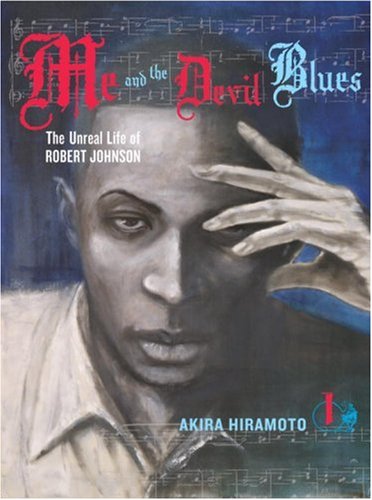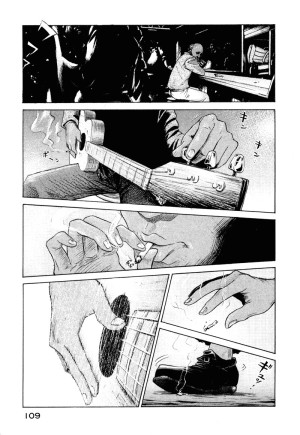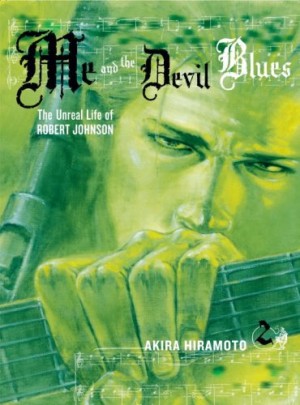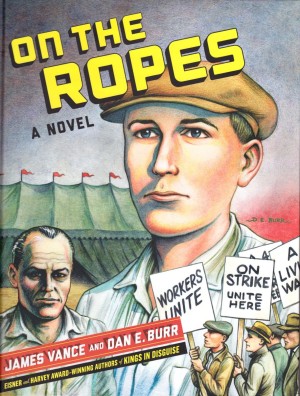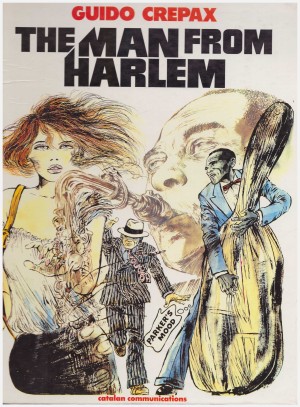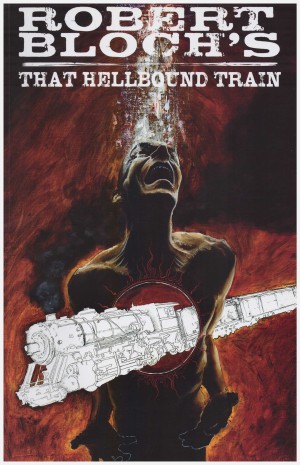Review by Ian Keogh
Me and the Devil Blues is, to begin with, an impassioned interpretation of the myth surrounding 1930s blues guitarist Robert Johnson, rumoured to have sold his soul to the devil at the crossroads in return for his virtuoso talent. Two bulky translated volumes combine the four books required for Akira Hiramoto’s work in his native Japan.
In Hiramoto’s tale the protagonist is RJ, who pays lip service to a virtuous life, but is easily seduced, and on hearing the story about trading his soul for the talent he desires the thought almost takes physical possession of him. He takes his guitar to the crossroads, but the transformation’s not immediate. First RJ has to learn that the blues has to be felt, that true blues can’t be faked. These early sequences with RJ being in turn scorned then indulged by old bluesmen are among the best in the two volumes, involving a series of pithy comments and some fantastic art. Hiramoto makes his point about the truth of the blues by presenting the wisdom of the ages in his illustrations. There’s an artistic indulgence in depicting men in their forties as timeless, as sat around a bar table Son House and Willie Brown are in effect handing down the stone tablets.
This is followed by an even better sequence of the guys playing and RJ cutting loose. The devil may be in RJ, but he’s also in the detail. The sample page is the exquisitely observed preparation, which is followed by RJ blowing the veterans off stage from the back of the bar. Conveying music is notoriously difficult in a graphic novel, and these pages rip from the heart and drip with mood. RJ rapidly learns there’s a personal cost to his new found technical ability.
Hiramoto underlines RJ’s tragedy, then takes the story in an unpredictable direction by having him accompany Clyde Barrow, later of Bonnie and Clyde notoriety. They travel together before Hiramoto sidelines RJ to concentrate on Barrow. Having established what the blues is, Hiramoto takes an extended view of the scenery breeding the conditions, at first a wider exploration of what it means to be black in 1930s USA, then the poverty of the rural communities Barrow visits. It’s a form of rural character based horror taking in other elements of the era, such as the prohibition of alcohol. These sequences feature the same magical realism as the earlier pages, but instil a different mood. Knowing what Barrow became, and what he’s already done, makes him a far less sympathetic lead, but the horrific situation he’s placed in paints him in a different light.
A very effective cinematic style infuses Me and the Devil Blues. At moments of high tension, such as a life resting on a young child’s ability to count correctly, Hiramoto mentions music, and it instantly invokes some Morricone style wailing harmonica. The illustration throughout is fantastic, dark and moody, accentuating the prevailing tension, and Hiramoto is an extremely precise artist, constructing his characters from fine detail. The small, quiet moments count as much as the wilder action, and are extremely rewarding.
Volume one cuts off at an odd and stressful moment, this partition due to creating two volumes of roughly equal size. Barrow’s looking for an exit, and his problems are minor compared with RJ’s possibly fatal circumstances. Cue volume two.
